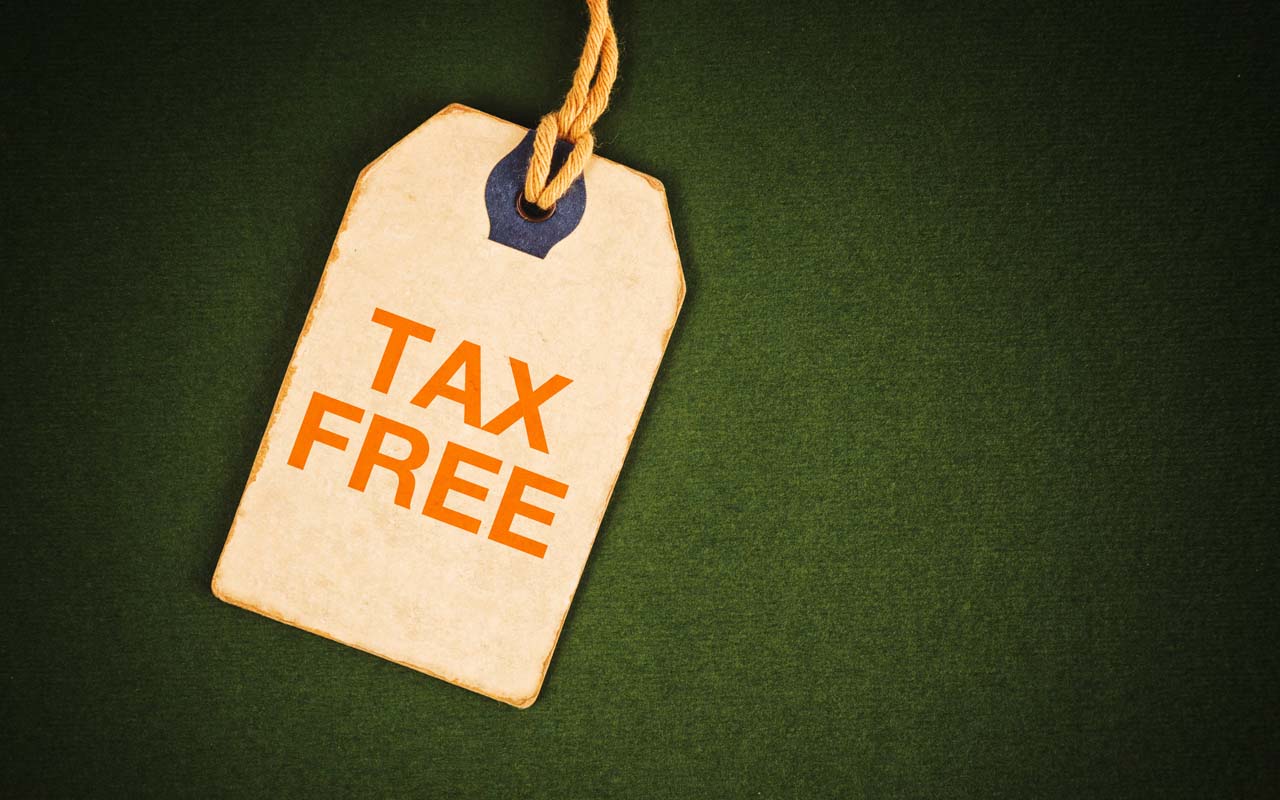How to Retire on $500,000
If you're wondering how to retire on a small nest egg, or how to simply make more income from a larger investment, consider these seven specialty high-yield investments.


If you ask most financial advisers how to retire on a half-million dollars, they’ll likely say it can’t be done.
Many financial advisers point to the “4% rule” (also the “Bengen rule”) for tax-advantaged accounts such as 401(k)s and IRAs. The 4% rule says you can draw up to 4% of your nest egg’s value in your first year of retirement, then add inflation to the prior year’s total and withdraw that each subsequent year, for 30 years, without worrying your money will run out. William Bengen, who first proposed the rule in 1994, later updated that figure to 4.5%.
The median personal income in the U.S. is $33,706 per year, as of 2018 data. Not including Social Security, you’d need about $750,000 in your retirement account(s) to hit that number, if you followed this rule. Depending on where you live, as well as the lifestyle you want to maintain, you’d probably need to start with more. That’s why many advisers point even higher, stating figures between $1 million to $1.5 million as ideal retirement targets.
Brent Weiss, head of planning at Facet Wealth in Baltimore, reminds us there is no one-size-fits-all retirement solution. “In retirement, we face a unique set of risks and many are unknowns,” he says. “From inflation to healthcare costs to longevity, we need to have a plan for them today.” Among those issues is that not every family has as much saved as they need. That’s OK. If you’re wondering how to retire on less than what the traditional wisdom says you need, you have a few options.
These seven high-yield investments may allow you to retire well on a nest egg as small as $500,000. One other aspect of the 4% rule is that any dividends or bond interest you receive diminishes the amount you need to withdraw for your annual income. These seven investments should provide more across dividends and distributions* alone than the U.S. median personal income.
Data is as of Sept. 22. Taxes are not factored into target calculations. Tax considerations will vary widely, with some investors paying no taxes, depending on several factors, including what type of retirement account you have (Roth IRA, traditional IRA, 401(k), etc.), the type of income you are collecting, your level of annual ordinary income, what state you live in and more. *Distributions made by closed-end funds are a combination of dividends, interest income, realized capital gains and return of capital.

Larger Companies
A diversified retirement portfolio mixes stocks, bonds and other assets to ensure that, if one asset class crashes, the entire portfolio doesn’t collapse. While high dividends and fixed income will soften the blow somewhat, high-yield stocks and funds still carry some risk. Thus, it’s still best to diversify to add another layer of protection.
Let’s start with larger-company stocks.
The S&P 500 is a 500-company index that holds mostly large-cap stocks such as Apple (AAPL), JPMorgan Chase (JPM) and Exxon Mobil (XOM). It’s generally considered a good representation of the American economy, and it serves as a performance benchmark for thousands of actively managed and index funds.
While the S&P 500 is good for growth, it doesn’t deliver much in dividends. S&P 500 funds yield less than 2% at present. However, we can earn more by investing in a closed-end fund (CEF) that puts a twist on the index. You can learn more about CEFs here, but in short, they’re actively managed funds that can use certain mechanics, such as leveraging debt and trading options, in an attempt to generate outsize income and sharper price gains.
The Nuveen S&P 500 Buy-Write Income Fund (BXMX, $13.06) is a CEF that holds a majority (but not all) of the S&P 500’s components. However, what makes it different is that management also sells call options against its holdings. Traders use this “buy-write” options strategy to generate returns, which is how BXMX offers such a large distribution yield (currently 7.1%).
We also want to get exposure to the tech sector, which is loudly taking over the rest of the American economy. But because technology stocks often funnel most if not all of their cash into research and development, it’s not an income-friendly sector. The yield on the Technology Select Sector SPDR Fund (XLK), an index exchange-traded fund, is just 1.3%.
The BlackRock Science and Technology Trust (BST, $32.71), another closed-end fund with an actively managed tech portfolio, holds 100 mostly larger tech companies, including the likes of Microsoft (MSFT) and Amazon.com (AMZN). However, 30% of its portfolio is invested overseas, so it also holds firms such as Chinese internet giant Tencent Holdings (TCEHY).
Again, an options strategy helps BlackRock Science and Technology generate an outsize yield (5.5%) compared to its more straightforward competitors. But it’s not sacrificing much growth – BST, which came to life in late 2014, has outperformed the XLK 149%-109% on a total-return basis since the start of 2015.

Smaller Companies
Small-cap stocks and other investments centered on smaller companies might seem like counterintuitive additions to a retirement portfolio. But 1.) Americans are living much longer than they did decades ago, leading more financial advisers to emphasize growth later in life, even into retirement, and 2.) a few investments can still wring income out of smaller companies.
Royce Value Trust (RVT, $14.01) is a straightforward play on small-cap stocks. RVT is the first small-cap closed-end fund, investing in a wide selection of 423 companies currently. No stock accounts for more than 3% of the fund’s assets under management, and the vast majority represent mere fractions of a percent, which insulates the fund from single-stock implosions. Top holdings at the moment include aerospace and electronics company Heico (HEI), thermal imaging camera specialist FLIR Systems (FLIR), and Quaker Chemical (KWR), whose fluids and lubricants are primarily designed for the steel and metalworking industries.
RVT uses a small amount (4.4%) of leverage – taking out debt to invest more money in its holdings – which can help amplify its returns. The fund offers a high 7.7% distribution rate, but understand that much of that distribution is actually returned capital gains. Only a small portion of that is true dividend income, which makes sense given that smaller companies tend to offer little if no dividends.
Another way to invest in extremely small companies with high growth potential is TriplePoint Venture Growth (TPVG, $16.99), a Silicon Valley-based business development corporation (BDC). BDCs step in where many big banks won’t, providing financing to smaller companies – in fact, they were literally created by Congress, just like REITs, to do it. And like REITs, BDCs must pay out at least 90% of their taxable income as dividends.
TPVG employs numerous industry experts who have spent decades financing and fostering tech companies. It invests in the “growth stage” – essentially, the stage of capital needs that occurs right before companies go public. It has gotten in early on some truly impressive businesses, including Square (SQ), digital doorbell service Ring (now owned by Amazon) and YouTube (now owned by Google parent Alphabet). It also was an early investor in Facebook (FB).
TriplePoint Venture Growth has delivered a 103% total return since its 2014 IPO, which is roughly 2.5 times better than the small-cap Russell 2000’s return in the same time frame. Much of that is courtesy of its outsize 8.5% dividend yield.

Real Estate
Real estate investment trusts (REITs) trade on the public exchanges just like stocks, but they’re slightly different than the average company. For one, they’re required to pay out 90% of their taxable profits in the form of dividends, which is their tradeoff for enjoying generous tax exemptions. They’re also not perfectly correlated with stocks – real estate may actually perform well when most other stocks aren’t, and vice versa – so that’s a diversification benefit.
One option for REITs is another closed-end fund: the Cohen & Steers Quality Income Realty Fund (RQI, $15.73). This CEF boasts roughly 131 holdings in the real estate space. However, unlike many funds that hold just the REITs themselves, RQI also has a 14% weighting in their preferred stocks, as well as a small allocation to their corporate bonds – both of which further skew the fund toward providing higher income. Its common-stock holdings include the likes of telecom-infrastructure REIT American Tower (AMT), industrial play Prologis (PLD) and data center operator Equinix (EQIX).
RQI is one of the best funds of its kind. Its 6.1% distribution yield has contributed to an annualized 18.3% total return over the past decade – putting it in the top 1% among its competition. It’s been similarly dominant over the trailing five- and one-year periods.

Bonds
Investors are increasingly nudged into bonds as they near and eventually enter retirement. That’s because bonds tend to be less volatile than stocks, their returns aren’t uncorrelated with stocks and they provide a source of fixed income that retirees can depend on.
Pimco is one of the largest bond investors in the world, with more than $1.8 trillion in assets under management – most of it in debt products. Pimco Income Strategy II Fund (PFN, $10.28) is a prime example of its prowess.
PFN’s managers, Alfred Murata and Mohit Mittal, invest in a wide range of debt vehicles. The biggest chunk of its assets (27.3%) is in high-yield bonds (otherwise known as junk), with another 26.7% in mortgage-backed securities, nearly 12% in international developed-market sovereign debt, and other sprinklings of investment-grade bonds, U.S. government-related debt, municipal bonds and more.
This fund has doubled, and sometimes even tripled, the “Agg” bond benchmark over most significant time frames, and it typically sits around the top third of funds in its category. The lion’s share of that performance comes from its 9.3% distribution yield.

Municipal Bonds
Municipal bonds are a special subset of debt that deserves its own focus, because they’re not taxed like other debt. Bonds from entities such as states, cities and counties are, at a minimum, exempt from federal tax. And depending on where you live and where those bonds are issued, you might not even have to pay state and local taxes.
While their headline yields often are smaller than regular bonds with similar risk, the tax exemption may offset that difference and more. But if you do invest in municipal bonds, remember: Owning these types of bonds within a tax-deferred account such as an IRA negates that tax benefit.
Consider the MFS High Yield Municipal Trust (CMU, $4.64). One other interesting aspect of CEFs it that, because of how they’re constructed, they can sometimes trade at a premium to the net asset value (NAV) of their holdings – and sometimes at a discount. Right now, numerous muni-bond CEFs trade at small premiums to their NAV. However, CMU trades at a 5.5% discount, which means you’re essentially buying its assets for 94.5 cents on the dollar. Better still? That discount is actually wider than its 10-year average discount of 1.6%.
MFS uses a considerable amount of leverage to generate not only a 4.7% yield, but considerable outperformance over the Bloomberg Barclays Municipal Bond Index benchmark over most significant time periods.

Putting It All Together
If you were to divide your money evenly across all seven funds, your portfolio would yield 6.99% at current prices. Pour just $500,000 into these investments, and you would generate $34,950 annually – more than $1,200 per year better than the median American personal income.
And naturally, if you have even more money to invest, that nominal income figure will be even higher.
While this list does show you how to retire on a smaller lump sum, remember: these investments, like any other, carry their own risks. CEFs in particular can see more exaggerated price movement, compared to plain index or actively managed ETFs and mutual funds, because of the debt leverage they use. Leverage amplifies gains, sure, but also losses. Also, certain options strategies are great at generating income, but they can cap upside in truly rip-roaring markets. Lastly, everyone’s tax situation is going to be different, which means the amount you’ll need to invest may be different, too.
But these investments do deliver far more of their performance in regular distributions, which can be essential in planning out your finances in retirement. And as shown above, they have (and have demonstrated) the potential to outperform their benchmarks.
Profit and prosper with the best of Kiplinger's advice on investing, taxes, retirement, personal finance and much more. Delivered daily. Enter your email in the box and click Sign Me Up.

